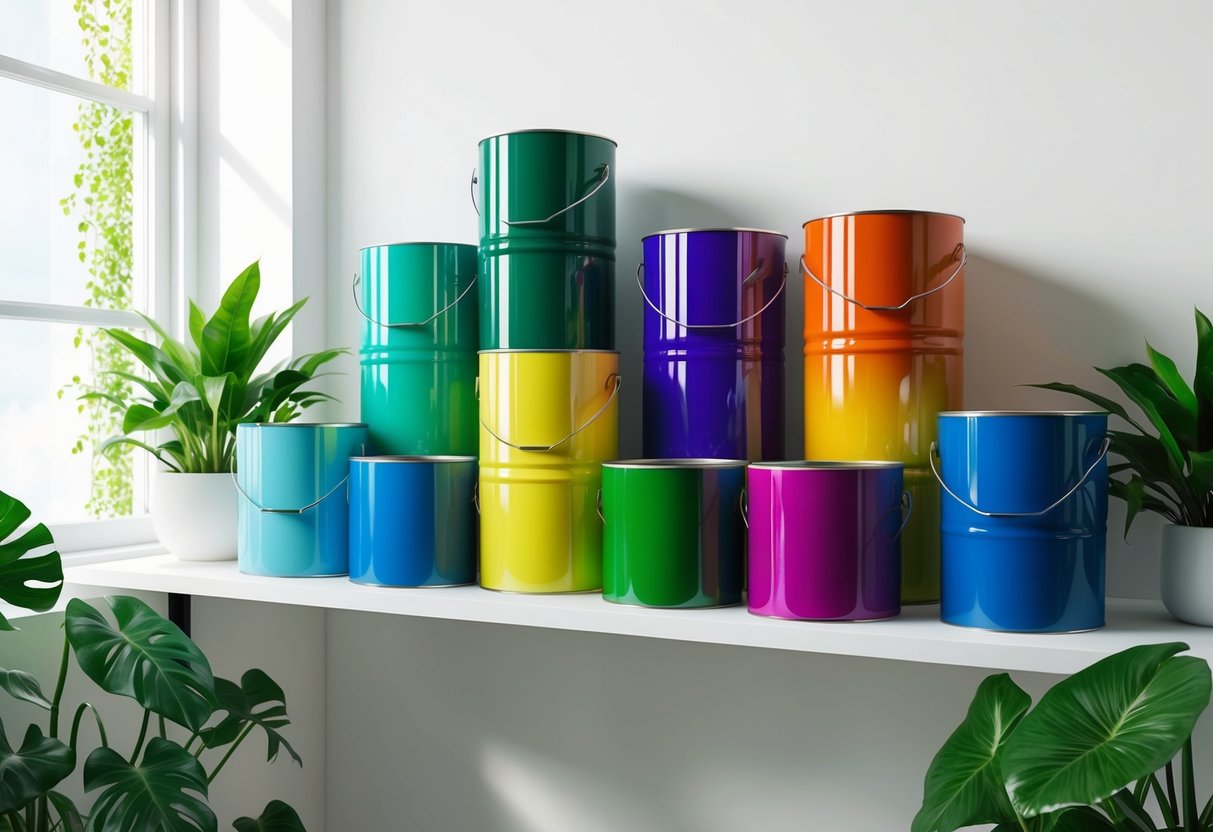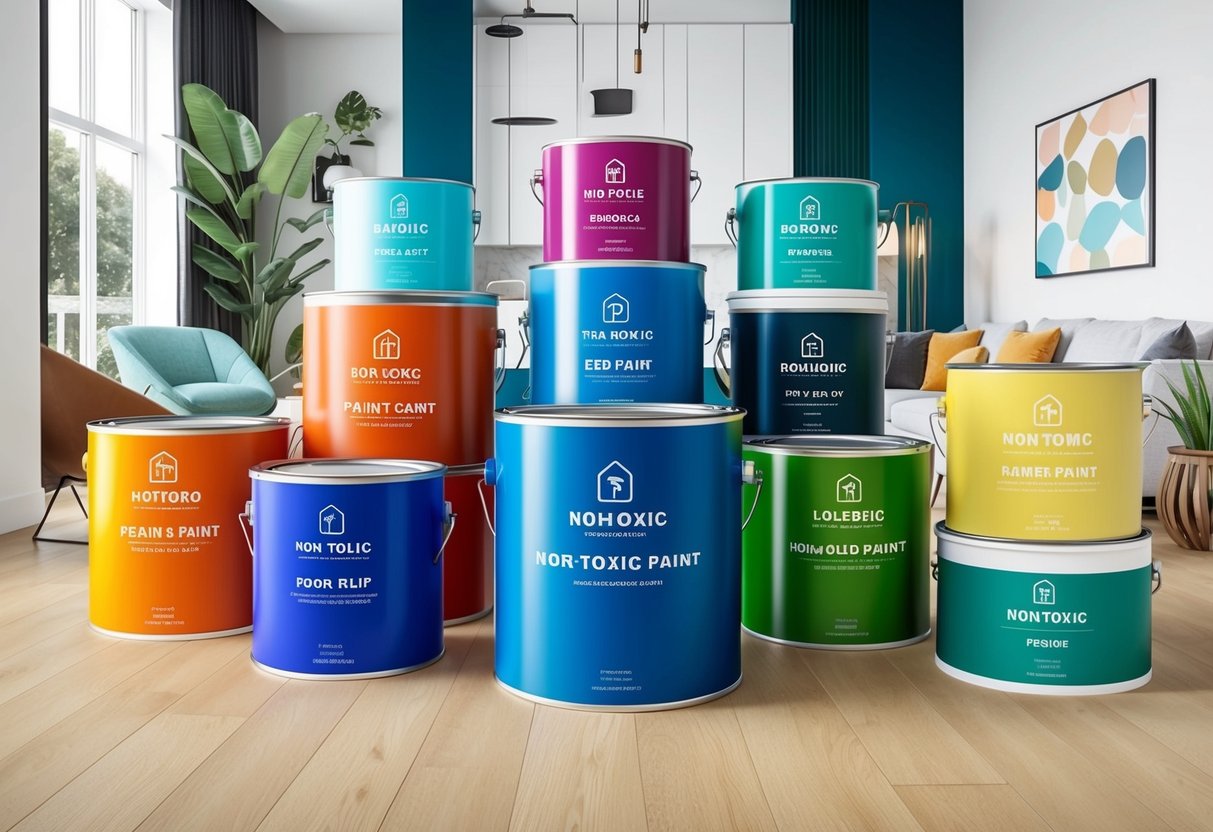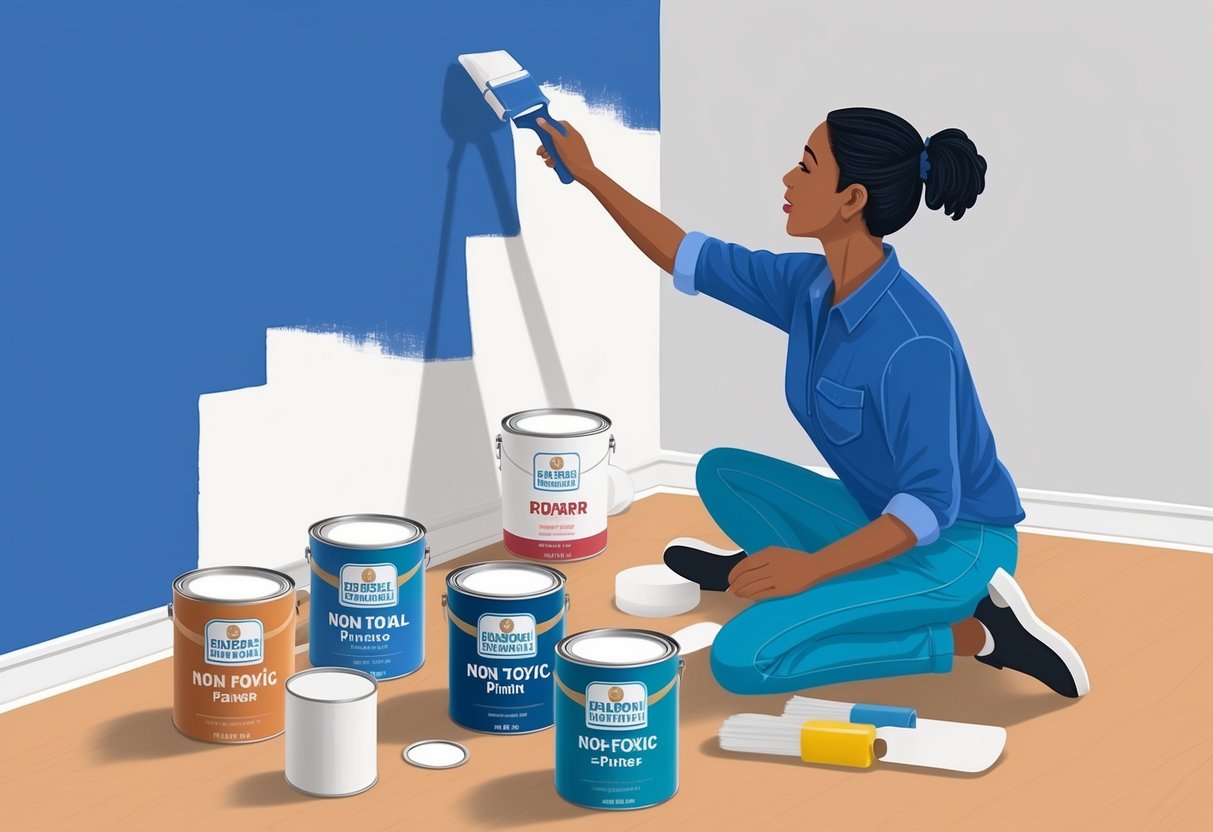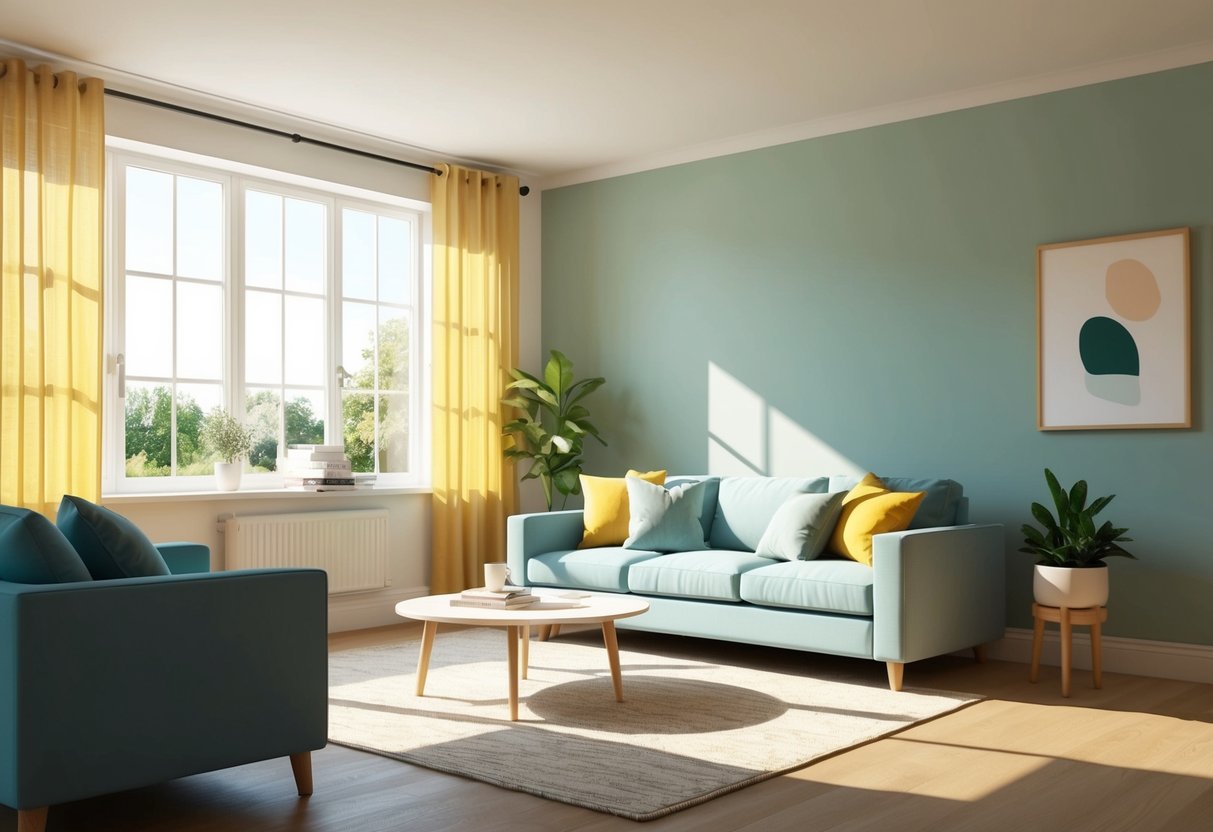
Recommended Non-Toxic Paints for Different Rooms

Selecting the right non-toxic paint can improve indoor air quality and create a healthier environment in any living space. Consider factors such as VOC content, durability, ingredients, finish, and ease of cleaning to make an informed decision.
Living Rooms and Bedrooms
Living rooms and bedrooms often need paints that are both safe for prolonged exposure and durable enough to resist minor scuffs or marks. Zero-VOC paints are ideal, as they significantly reduce odors and harmful emissions, supporting a safer indoor atmosphere.
Look for water-based acrylic options that are easy to clean and maintain their color over time. Some highly recommended options include ECOS Paints, which offer zero-VOC, latex-free formulas known for their lack of harsh fumes and consistent finish.
For those with chemical sensitivities, milk paint made from milk protein offers a genuinely natural choice with minimal processing that is gentle on both people and the environment, as highlighted by The Good Trade.
Key features to compare:
- VOC content: Choose zero-VOC wherever possible
- Odor: Low-odor products
- Ingredients: Non-toxic, organic materials
Interior Walls and Ceilings
Paints for interior walls and ceilings should be easy to apply, provide solid coverage, and be formulated for health safety. Water-based paints with natural or mineral additives can improve breathability and reduce long-term exposure to irritants.
Healthier Homes offers zero-VOC paints that blend organic clay and minerals to create durable, non-toxic finishes. These paints are well-suited for allergy-prone individuals and families seeking cleaner indoor air.
When selecting paint, consider sheens like eggshell or matte, which can hide wall imperfections and support easy maintenance without added chemicals.
Important considerations:
- Sheen type: Matte or eggshell for most walls and ceilings
- Application: Uniform coverage, low splatter
- Health benefits: Reduced indoor air pollution and allergen exposure
Non-Toxic Primer and Preparation

Selecting a non-toxic primer is essential for maintaining indoor air quality and ensuring the safety of household members. Proper application techniques also help maximize adhesion and minimize exposure to fumes during painting projects.
Choosing a Safe Wall Primer
When it comes to preparing walls for painting, using a zero-VOC or low-VOC wall primer is a key first step. These primers release minimal volatile organic compounds, reducing harmful indoor air pollution.
Consumers should look for formulations that explicitly state “no added formaldehyde,” “ammonia-free,” and “free from hazardous air pollutants (HAPs)” on the label. Brands like ECOS offer a range of non-toxic, zero-VOC primers designed for both new drywall and previously painted surfaces.
For metal surfaces, specialized non-toxic metal primers are available with low or no VOCs. Using natural ingredients, such as water-based or plant-based components, is another indication of a healthier, safer option.
Application Tips for Healthier Interiors
Before applying primer, ventilate the space by opening windows and using fans to maintain airflow. Always wear gloves and, if sensitive to odors, consider a painter’s mask even with low-emission products.
Apply the primer in thin, even coats with brushes or rollers made from natural or synthetic fibers. Allow each coat to dry fully—most zero-VOC primers cure quickly and become odorless after drying.
Clean tools with mild soap and water instead of harsh solvents to keep the process safer and minimize chemical residue. Proper preparation and cleanup further reduce indoor pollution and make the space healthier for everyone.
Emerging Trends in Non-Toxic Paint Technology

Recent advancements in non-toxic paint technology focus on reducing indoor air pollution and introducing safer, performance-based ingredients. These shifts address health concerns by improving formulations and moving toward more sustainable, cleaner alternatives.
Low-Emission Innovations
Non-toxic paint manufacturers are prioritizing low-emission technologies, especially zero and low-VOC (volatile organic compound) formulas. Paints now commonly feature water-based acrylics blended with minerals and organic additives, which further limit chemical off-gassing.
A growing number of brands offer formulas certified for extremely low emissions, making them suitable for sensitive environments. Some manufacturers incorporate natural clay, chalk, and mineral bases, which provide breathability and enhance air quality.
These formulas help prevent the buildup of indoor pollutants. To support healthy indoor living, some paints now avoid synthetic fragrances and formaldehyde donors.
Features such as rapid curing and washable finishes are becoming standard, enhancing both health and practicality. For a deeper look at options in these categories, see this overview of real zero VOC paints.
Titanium Dioxide and Safer Pigments
Pigment choices have also evolved, with special attention given to the safety of titanium dioxide and alternative colorants. While titanium dioxide remains widely used for its opacity and brightness, recent research scrutinizes its safety in nano and powder forms.
Manufacturers are responding by refining the particle size and surface treatment processes to minimize potential health risks. Some non-toxic paints emphasize mineral and plant-based pigments, which lower the risk of heavy metal contamination and can improve overall air quality.
Paints are now frequently tinted with zero-VOC colorants, further supporting low-emission interiors. Brands focusing on these safer pigment protocols provide options for homeowners seeking healthier, hypoallergenic environments.
You can find a list of eco-friendly non-toxic paints utilizing these advanced pigment technologies.